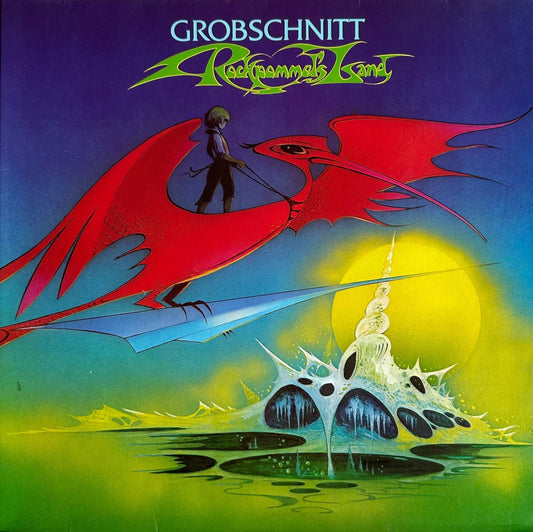I’ve previously mentioned audio icon Henry Kloss’ time at AR (Vintage Whine, way back in Copper #5). The time will come for me to do a comprehensive review of Kloss’ post-AR serial enterprises, KLH, Advent, Kloss Video, Cambridge SoundWorks, and Tivoli—but this is not that piece. Right now, I’d like to focus on Kloss’ genius at packaging audio gear to fit almost any environment—and how the present vinyl revival is inspiring a new generation to take a crack at packaging phonographs as Kloss once did. The problem is—they’re doing a terrible job of it.
Kloss often used cutting-edge technology in his products, being an early adopter of transistor amplifiers, Dolby B, chrome dioxide cassettes, and three-gun projection TV, but such innovations were rarely showy or done with much fanfare (the exception being the large KLH 9 electrostats). They were simply done to provide better sound in well-packaged, reasonably-priced products.
For decades, almost every American home had a small countertop radio in the kitchen. Such radios were generally AM only, and often possessed dubious sound quality. Kloss’ first “hi-fi for all seasons” product was the KLH Model Eight (always spelled out as “Eight”, for some reason), a compact tube-type FM-only radio/amp with a separate speaker of matching size, made from 1960-65. Barely a hand-span in width, the Eight was notable for its fine sound quality; its clean styling still influences product design, and many Eights are still in use today. The Eight showed that there was a market for good-sounding products that could be used almost anywhere—and Kloss later returned to that market again and again, with Cambridge SoundWorks and Tivoli.
As important as the Eight was, the products I’d like to focus upon today are the KLH Models 11,15, 20, and 20 Plus. These products encompassed two classes of audio products upon which many budding audiophiles cut their teeth, and with which many regular folks found musical enjoyment: compact systems and portable systems. The 11—apparently numerals were okay—was a cleverly packaged portable system in a suitcase, literally. The rather cheesy Garrard record changer and electronics comprised the bottom half of the suitcase, the top being a clip-on lid for travel. The separate small speakers clipped on opposite ends of the buttoned-up turntable, forming a faux-leather suitcase such as Samsonite used to make.
The 11 was notable for several reasons: its compact size and fully-enclosed design were possible because its electronics were all-transistor, supposedly one of the first units to be all solid state.Note that while the speakers can pack in with the turntable, they are separate—allowing proper enclosure design and avoiding the acoustic feedback that would likely result from having all in a common enclosure (a lesson today’s hipster designs seem to have missed).
More ambitious than portable systems were compact systems. Most—like the KLH Models 15 and 20—had turntable and electronics in one enclosure, with two separate speakers . Some inexpensive units seemed to teeter between the portable and compact classifications, with the turntable and one speaker in a common enclosure, with the second speaker clipping onto the front for transport. Not so good.
Both portables and compacts were popular with college students for obvious reasons. Compacts had a little more domestic sensibility, with wood-veneered cabinets. The KLH 15 was still phono-only; the 20 was more ambitious, and featured a vernier-tuning FM tuner in addition to the turntable, along with bigger/better speakers. It’s important to note that these were not cheap systems: the 11’s $200 price tag in 1965 equals over $1500 today, and the 20’s $400 price is over $3000 in 2017 bucks.
The 20 Plus (seen atop the page) was the 20 decked out in mid-century modern glory: the phono/amp unit received a wooden flip-top lid and all three pieces mounted on spun-aluminum pedestals, creating a not-quite-console.
So: why am I dwelling upon products that most of us would sniffily regard as lo-fi, or mid-fi at best? Because they were well-designed, functional, solidly-built products that gave pleasure to an entire generation. Kloss had a singular genius for maximizing the performance of everything he touched, and even his least-expensive products were good-sounding, competently designed and easy to use. They were not built (or priced) to be throw-aways; the sheer number of old Models Eight and 20 still in use is impressive.
Contrast the 11, 15, and 20 with almost any product from Johnny-come-lately turntable builders inspired by nostalgia and the LP revival. Look at, say, Crosley. Whether you choose the cheesy faux-retro models or the just plain cheesy plasticky models, these are reportedly dangerous record-chewers. The company introduced a few higher-priced turntables that are fairly credible, built by ProJect. But if you wanted a ProJect-built table, would you want it with the Crosley name attached?
Crowdfunding sites often feature badly-designed audio products—yes, there are some good crowdfunded products, I’ve worked with a number of them. But in general, turntables offered for crowdfunding seem ill-conceived, ill-designed, and unlikely to ever reach production.Remember the Floating Record on Kickstarter? It raised over $1.5M with an uphill-working tonearm. There have been vertical turntables in the past, but they all seemed a little more aware of the laws of physics. How about the Atmo Sfera platterless table? Over 60,000 Euro raised.
Remember that little VW bus that would run around your record and play it—supposedly? Well, the present generation seems unaware: a modern take on it raised over $350,000 on Kickstarter. A more suave but no less ridiculous cousin, the Love turntable, raised over $860,000 on Kickstarter. And there are plenty of all-in-one units out there that have turntable and speakers in the same enclosure, like this thing. I can’t imagine all the issues that would have.
It’s a little ironic that these clunky devices were all prompted by the nostalgia over records. All they do is make me nostalgic for well-designed, solidly-built, no-BS audio products.
Is that whirring sound Henry Kloss spinning in his grave?



